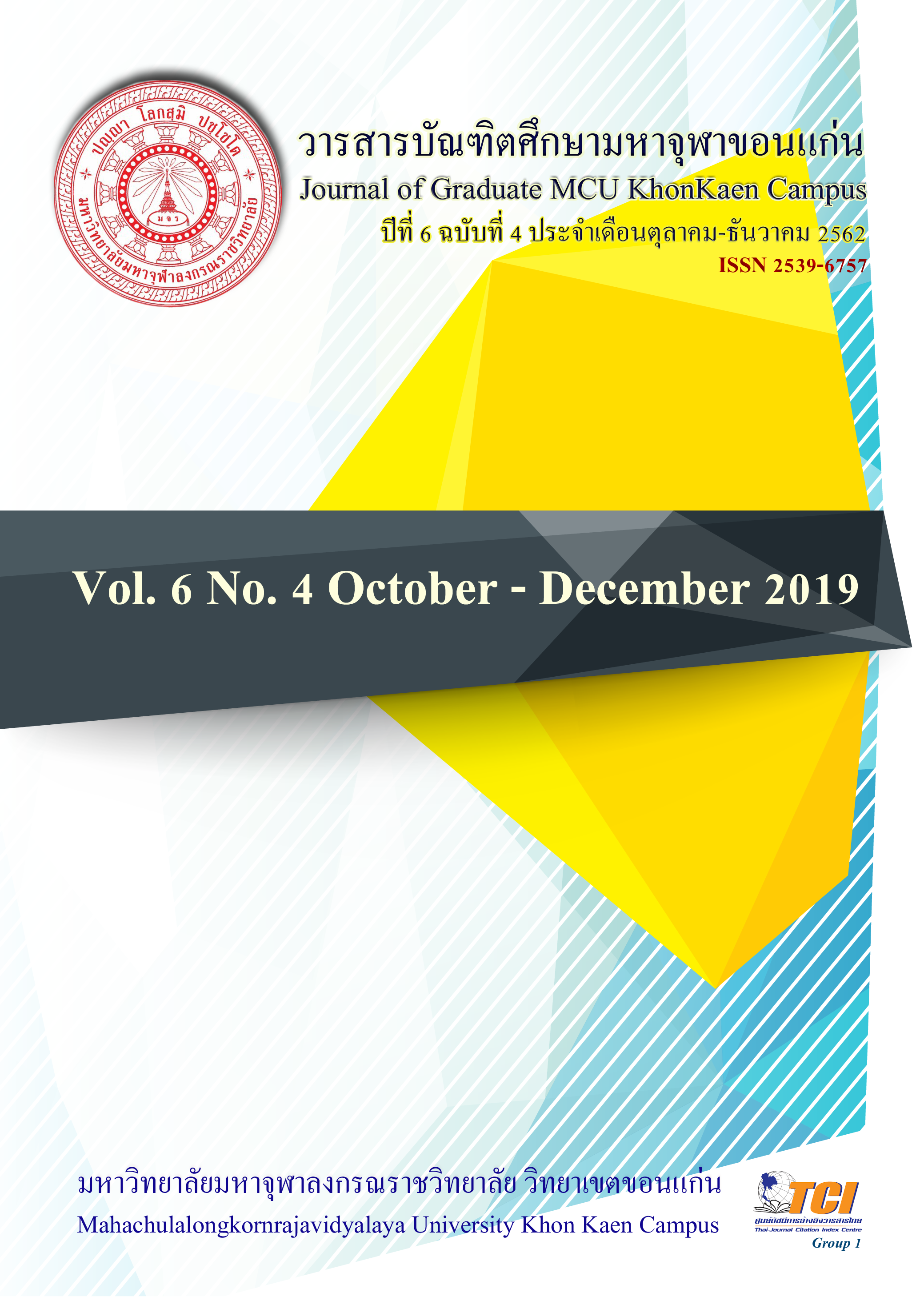The Philosophical Concepts of Phee-Fa of Ban Na Siew villagers, Na Siew sub-district, Mueang district, Chaiyaphum province
Main Article Content
Abstract
The aims of this research were: 1) to study the concepts of ‘Phee-Fa’; 2) to study the concepts of ‘Phee-Fa’ of Ban Siew villagers, Na Siew sub-district, Mueang district, Chaiyaphum province; 3) to study the philosophical concepts of ‘Phee-Fa’ as mentioned. This qualitative research had its research tools as an in-depth interview form, an observatory form and group dynamic with the key informants including 18 of ceremony conductors, patients and participants. The obtained data were interpreted by the descriptive analysis based on the deductive method.
The research results were as follows:
1) The concept of ‘Phee-Fa’ is based upon three aspects of belief: 1) Brahmanism belief indicating that the Brahma is the creator of all things, the Brahman is the medium between the Brahma and human beings; 2) ghost belief of I-san people relating to their belief of ‘Phaya Than’ (ghost) and the supreme god as the creator of all things; 3) Buddhist belief concerning the belief of cycle of birth and death; those who conducted the meritorious deeds will be reborn in the heavens and those with evil deeds will be reborn in hells. The belief of ‘Phee-Fa’ is thus the combination of the mentioned views of belief mentioning the Brahma and Phaya Than as the creators of all things and Indra in Buddhism.
2) In regards to the concepts of ‘Phee-Fa’ of Ban Siew villagers, the villagers have believed in the existence of the ghost since the time that Chaiyaphum province was governed by Lan Chang Empire. In such period, the King Chaichetthadhiraj sent Phrayalea from Vientiane to govern Chaiyaphum and Phrayalea brought ‘Phee-Fa’ from his city with the aim of protecting his army and local people. Today, the villagers still practice and organize the ceremony to worship and communicate with the spirit.
3) The philosophical concepts of ‘Phee-Fa’ is a metaphysic study because metaphysics is a branch that studies about abstraction or things that cannot be proven with all five senses but by reason or the sixth sense (mind). Therefore ‘Phee-Fa’ can be explained in three perspectives: 1) Buddhist philosophy, in Buddhism, it is believed that Indra is real and exists in the mental vision; 2) the views of the Isan people believe that ‘Phee-Fa’ or Phaya Than actually exists as the supreme god as the powerful one and creator; 3) The Brahmanism view, Brahma is the god of the creator who created man, universe and all things in the universe. Therefore, ‘Phee-Fa’ in the meaning of the community of Ban Na Siew means Phra Indra in Buddhism, Phaya Than of the Isan people and Brahma of Brahmanism. All three views confirmed the idea of its existence of Indra, ‘Phee-Fa’ and Brahma.
Article Details
References
PraneeWongthes. Society and Culture in Southeast Asian.Kangkok. Reankweaw. 2000.
SayyaSayyasavivat. Sociological Theories, Creation of Valuation and Utilization, Kangkok.
Chawpraya. 2000.
PhramahaprayongChandeang. A Comparative Study of the Status of Deity in the Suthatapitaka Scriptures and the Vedas and Beliefs of Deity in Thai Society. Master of Arts Thesis (Graduate School : Mahidol University, 1991)

